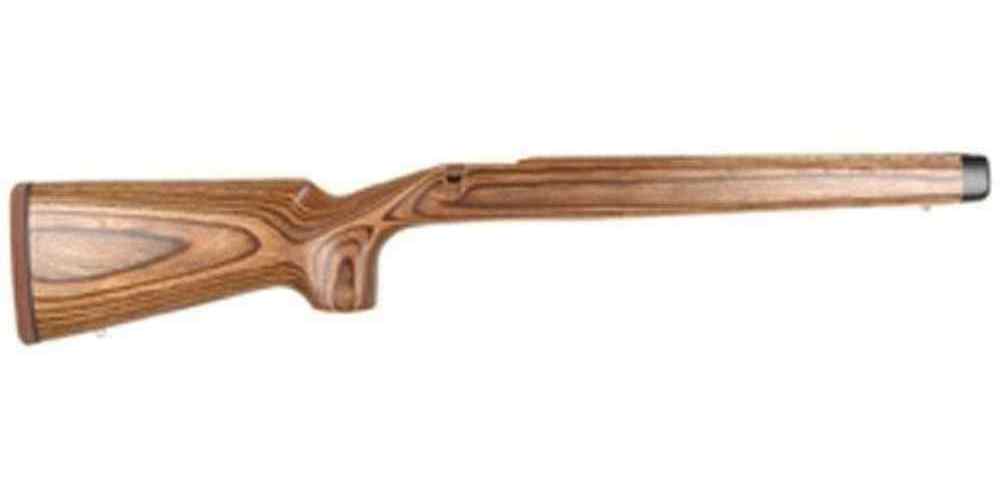Blend in seamlessly with your surroundings: master the art of camouflaging your rifle stock.
Using Natural Materials for Camouflage
When it comes to hunting or tactical operations, blending in with your surroundings is crucial for success. One of the most important aspects of camouflage is your rifle stock. A brightly colored or shiny stock can easily give away your position to your target. That’s why many hunters and shooters choose to camouflage their rifle stocks to better blend in with the environment. While there are many commercial options available for camouflaging your rifle stock, using natural materials can be a cost-effective and environmentally friendly alternative.
One of the most common natural materials used for camouflaging rifle stocks is burlap. Burlap is a versatile material that can easily be attached to your stock using adhesive or zip ties. To create a camouflaged look, simply cut the burlap into strips or squares and attach them to your stock in a random pattern. You can also add additional natural materials such as leaves, twigs, or grass to further blend in with your surroundings.
Another natural material that can be used for camouflaging your rifle stock is jute twine. Jute twine is a durable and lightweight material that can easily be wrapped around your stock to create a textured camouflage pattern. To use jute twine for camouflaging, simply wrap it around your stock in a crisscross pattern, making sure to leave gaps for the underlying stock to show through. You can also add additional natural materials such as moss or pine needles to enhance the camouflage effect.
For those looking for a more permanent solution, painting your rifle stock with natural colors can be an effective way to blend in with your environment. Earth tones such as browns, greens, and grays are ideal for camouflaging your rifle stock in a variety of environments. To paint your stock, first clean and sand it to ensure proper adhesion. Then, apply a base coat of a light color such as tan or light gray before adding darker colors in a random pattern to mimic natural camouflage.
In addition to burlap, jute twine, and paint, there are many other natural materials that can be used for camouflaging your rifle stock. For example, you can use natural dyes made from plants such as walnuts, berries, or onion skins to create custom camouflage patterns on your stock. You can also experiment with different textures and patterns by using materials such as bark, feathers, or animal fur to create a unique and effective camouflage design.
Overall, camouflaging your rifle stock with natural materials is a cost-effective and environmentally friendly way to blend in with your surroundings during hunting or tactical operations. Whether you choose to use burlap, jute twine, paint, or other natural materials, the key is to create a camouflage pattern that mimics the natural environment in which you will be operating. By taking the time to camouflage your rifle stock properly, you can increase your chances of success in the field while also adding a personal touch to your gear.
Painting Techniques for Rifle Stocks
When it comes to hunting or tactical operations, having a well-camouflaged rifle can make all the difference in staying hidden and achieving success. One of the most effective ways to blend your rifle into its surroundings is by painting the stock with camouflage patterns. In this article, we will discuss some techniques for camouflaging your rifle stock to help you stay concealed in the field.
Before you begin painting your rifle stock, it’s important to properly prepare the surface. Start by removing the stock from the rifle and cleaning it thoroughly with a degreaser to ensure that the paint adheres properly. Once the stock is clean and dry, lightly sand it with fine-grit sandpaper to create a rough surface for the paint to grip onto.

When it comes to choosing a paint for your rifle stock, there are a few options to consider. Many hunters and tactical operators prefer to use spray paint designed specifically for firearms, as it is durable and designed to withstand the elements. However, you can also use regular spray paint or even acrylic paint if that’s what you have on hand.
Before you start painting, it’s a good idea to practice your camouflage pattern on a piece of cardboard or scrap wood to get a feel for the technique. Once you’re ready to paint your rifle stock, start by applying a base coat of the lightest color in your camouflage pattern. This will serve as the background for your design and help the other colors stand out.
After the base coat has dried, it’s time to start adding your camouflage pattern. There are many different techniques you can use to create a realistic camouflage pattern, such as sponging, stenciling, or freehand painting. Experiment with different techniques to see which one works best for you and gives you the desired effect.
When painting your rifle stock, it’s important to work in thin layers and allow each layer to dry completely before adding the next. This will help prevent the paint from running or smudging and ensure a clean, professional-looking finish. Be patient and take your time to achieve the best results.
Once you have finished painting your rifle stock, allow it to dry completely before reattaching it to your rifle. This will help prevent the paint from chipping or scratching off prematurely. It’s also a good idea to apply a clear coat of sealant to protect the paint and give it a glossy finish.
In conclusion, camouflaging your rifle stock is a great way to stay hidden in the field and increase your chances of success while hunting or on tactical operations. By following these techniques for painting your rifle stock, you can create a custom camouflage pattern that blends seamlessly into your surroundings. So grab your paint and brushes and get started on camouflaging your rifle stock today!
Adding Camo Tape or Wraps
When it comes to hunting or tactical operations, blending in with your surroundings is crucial for success. One way to achieve this is by camouflaging your rifle stock. Adding camo tape or wraps is a popular and effective technique that can help you stay hidden in the field.
Camo tape and wraps are designed to provide a quick and easy way to camouflage your rifle stock. They come in a variety of colors and patterns to match different environments, such as woodland, desert, or snow. These products are made from durable materials that are designed to withstand the rigors of outdoor use.
To apply camo tape or wraps to your rifle stock, start by cleaning the surface thoroughly to ensure proper adhesion. Make sure to remove any dirt, oil, or debris that may prevent the tape or wrap from sticking properly. Once the surface is clean, carefully apply the tape or wrap, making sure to smooth out any wrinkles or air bubbles as you go.
One of the benefits of using camo tape or wraps is that they can be easily removed and replaced as needed. This allows you to change your camouflage pattern to match different environments or seasons. Additionally, camo tape and wraps provide a layer of protection for your rifle stock, helping to prevent scratches and dings that can occur during use.
When applying camo tape or wraps, it’s important to pay attention to detail. Make sure to cover the entire surface of the rifle stock, including the buttstock, pistol grip, and forend. This will help ensure that your rifle blends in seamlessly with its surroundings. Additionally, take care to overlap the edges of the tape or wrap to create a seamless finish.
Another tip for camouflaging your rifle stock with tape or wraps is to use a combination of colors and patterns. Mixing different shades of green, brown, and black can help break up the outline of your rifle and make it more difficult to spot in the field. Experiment with different combinations to find the one that works best for your specific environment.
In addition to camouflaging your rifle stock, consider adding accessories such as scope covers or bipod wraps to further blend in with your surroundings. These small details can make a big difference when it comes to staying hidden from your target. Remember, the goal of camouflaging your rifle stock is to make it as inconspicuous as possible, so take the time to carefully consider all aspects of your setup.
Overall, camo tape and wraps are a simple and effective way to camouflage your rifle stock for hunting or tactical operations. By following these tips and techniques, you can ensure that your rifle blends in seamlessly with its surroundings, giving you the edge you need to succeed in the field. So next time you head out on a mission or hunting trip, don’t forget to camo up your rifle stock for maximum stealth and success.
DIY Camouflage Netting for Rifle Stocks
When it comes to hunting or tactical operations, blending in with your surroundings is crucial for success. One way to achieve this is by camouflaging your rifle stock. While there are many commercial options available, creating your own DIY camouflage netting for rifle stocks can be a cost-effective and fun alternative.
To start, you will need a few basic materials. These include a roll of camouflage netting, scissors, zip ties, and possibly some spray adhesive. The first step is to cut a piece of netting that is slightly larger than your rifle stock. This will allow you to wrap the netting around the stock and secure it in place.
Once you have cut the netting to size, you can begin to attach it to your rifle stock. One method is to use zip ties to secure the netting in place. Simply wrap the netting around the stock and use the zip ties to fasten it securely. Make sure to trim any excess netting to ensure a clean and professional look.
Another option is to use spray adhesive to attach the netting to the stock. This method can provide a more seamless finish, as the netting will adhere directly to the stock. Simply spray a thin layer of adhesive onto the stock, then carefully press the netting into place. Allow the adhesive to dry completely before handling the rifle.
Whichever method you choose, be sure to take your time and work carefully to ensure a neat and professional finish. Camouflaging your rifle stock can not only help you blend in with your surroundings, but it can also protect your stock from scratches and damage.
In addition to camouflaging your rifle stock, you may also want to consider adding some additional elements to further enhance your camouflage. One option is to attach natural materials such as leaves or branches to the netting. This can help break up the outline of your rifle and provide even better camouflage in a natural setting.
Another option is to use fabric dye to customize the color of your netting. This can be a fun way to create a unique and personalized camouflage pattern for your rifle stock. Simply mix the dye according to the instructions on the package, then soak the netting until you achieve the desired color.
Overall, camouflaging your rifle stock with DIY netting can be a fun and rewarding project. Not only can it help you blend in with your surroundings, but it can also protect your stock from damage and scratches. With a few basic materials and some creativity, you can create a custom camouflage pattern that is both effective and stylish. So why not give it a try and see the difference it can make in the field?
Blending in with Ghillie Suit Rifle Covers
When it comes to hunting or tactical operations, blending in with your surroundings is crucial for success. One of the most important aspects of camouflage is your rifle stock. A brightly colored or shiny stock can easily give away your position to your target. That’s where ghillie suit rifle covers come in handy. These covers are designed to help you blend in seamlessly with your environment, making it easier to remain undetected by your prey or enemy.
Ghillie suit rifle covers are typically made from natural materials such as burlap, jute, or synthetic fibers that mimic the look of foliage. They are designed to be lightweight and easy to attach to your rifle stock, providing you with an extra layer of camouflage in the field. These covers come in a variety of colors and patterns to match different environments, from woodland to desert to snow-covered landscapes.
One of the key techniques for effectively using a ghillie suit rifle cover is to ensure that it matches the surrounding vegetation. If you’re hunting in a forested area, choose a cover with green and brown tones to blend in with the trees and undergrowth. For a desert environment, opt for a cover with sandy or tan colors to mimic the arid landscape. By selecting the right cover for your surroundings, you can significantly increase your chances of remaining hidden from your target.
Another important aspect of camouflaging your rifle stock with a ghillie suit cover is to ensure that it doesn’t interfere with the functionality of your weapon. Make sure that the cover allows you to access the trigger, safety, and other controls easily. It should also be securely attached to your rifle stock to prevent it from shifting or coming loose during use. Some covers come with adjustable straps or ties to ensure a snug fit on your rifle.
When using a ghillie suit rifle cover, it’s essential to practice proper fieldcraft techniques to maximize its effectiveness. This includes moving slowly and quietly, minimizing your movements, and staying low to the ground to avoid detection. By blending in with your surroundings and using stealthy tactics, you can increase your chances of getting closer to your target without being noticed.
In addition to ghillie suit rifle covers, there are other techniques you can use to camouflage your rifle stock in the field. One option is to wrap your stock with camouflage tape or cloth to match the surrounding environment. This can be a quick and easy way to add an extra layer of camouflage to your weapon. Another technique is to use natural materials such as leaves, branches, or twigs to create a makeshift cover for your rifle stock. This can be especially effective in a pinch when you need to blend in quickly.
Overall, camouflaging your rifle stock with a ghillie suit cover is a valuable technique for staying hidden in the field. By choosing the right cover for your environment, ensuring it doesn’t interfere with your weapon’s functionality, and practicing proper fieldcraft techniques, you can increase your chances of success on your next hunting or tactical mission. So, next time you head out into the field, don’t forget to camouflage your rifle stock and blend in with your surroundings for a successful outing.







